By Tom Wintaugh | October 12, 2023

See why top ecommerce brands use Miva’s no-code platform to run
multiple stores, manage massive catalogs, and grow their revenue.
Ecommerce is a visual medium. Product photos are at the center of selling online, and there is no better way to instantly communicate the value prop of your business and offerings. When well-executed, product imagery is among the most effective conversion drivers that exist, so it follows that the success of your business relies in part upon the quality of your images. In this blog, we’ll outline best practices for excellent product pics, with tips for how to transform a simple product image into a selling powerhouse.
High-resolution images give potential customers a detailed view of what you are offering, helping to bring the product to life. Clear and crisp photos, taken with a professional camera and additional lighting, can display the quality and detail of a product effectively, persuading the customer to proceed to the checkout stage.
Tip: Many ecommerce websites use high resolution images, but neglect to compress them properly to support fast page loading speeds. A beautiful image is not effective if it takes so long to load that a customer navigates away. Read more about optimizing websites for speed here.
Maintaining a consistent style throughout your product photos builds a professional and cohesive brand image. It enhances the visual appeal of your ecommerce site and facilitates a seamless browsing experience.
Tip: Establish a style guide that outlines the color scheme, angles, and backgrounds to be used in your photos. This guide be very specific—down to the lens and exposure choices—but should also include emotional cues and inspiration. For example, your product image of an HVAC unit not only needs to display the product, but you might also want all of your product images to also demonstrate ease of use.
Providing multiple views and angles of a product allows customers to gain a comprehensive understanding of what they are purchasing. It helps in addressing any potential questions regarding the product’s appearance and functionality.
Tip: Advanced product imagery can employ interactive elements which allow the user to configure various details about the product or how it is viewed. A product visualizer is an excellent way to help the shopper get all of the information they need and “sell themselves” on the purchase.
A well-chosen background can accentuate a product's features and ensure that it stands out. Usually, a white or a single-color background works best as it eliminates distractions and puts the focus squarely on the product.
Tip: While many ecommerce stores prefer simple white backgrounds for product photos, this may make products harder to highlight in external search results like Google images, as vendors with similar products also display them against white backgrounds. Experiment with shades that will stand out when shoppers are using search engines to find your item or category.
Lifestyle images showcase products in real-life settings, often being used by people in “the real world.” These help customers visualize how the products would fit into their lives, and see themselves as a part of the brand’s culture.
Tip: The most effective lifestyle images convey an emotion in addition to just demonstrating product usage. How do the people shown using the product feel, and why is the product the key to achieving that positive emotion? Think about ways to communicate these ideas visually.
Infographics and annotations applied to product photos can be used to highlight unique features and benefits. They provide additional information that can persuade customers to make a purchase.
Tip: If you wish to add text or graphics to a product photo, make sure there is also at least one image available with no graphic overlays, so customers can always get a very clear view of the product.
Including photos that demonstrate the scale of a product can be a decisive factor for customers, helping them understand the product's actual size and proportions.
Tip: Use familiar objects or models to illustrate the product's size effectively. A famous Reddit tradition involves placing a banana next to any photographed object with the text “banana for scale.” A penny, a pencil, or a human hand are all good reference elements to include in a product photo to indicate scale.
Once the photos are taken, editing is vital to enhance the images and correct any flaws, ensuring that they look perfect before being uploaded.
Tip: Stay away from strong image filters, and focus your edit on achieving the most accurate representation possible of the product, including color and size.
Crafting the perfect ecommerce product photo hinges on visual clarity, consistency in style, and the thoughtful use of lifestyle imagery and annotations. With these techniques, you are creating more ways for customers to connect with your products, which will represent your brand well, and ultimately drive more sales for your store.

Katy Ellquist, Miva’s Digital Marketing Strategist, is an accomplished writer, marketer, and social media analyst who has created sophisticated content campaigns for a broad range of professional clients. She brings to Miva a complex understanding of ecommerce trends and techniques, building upon extensive digital agency experience and a prior role as direct liaison to Miva’s top accounts. Katy is a regular contributor to the Miva blog, covering essential ecommerce topics like design & development strategy, site optimization, and omnichannel selling, with the goal of increasing the actionable knowledgebase of the entire Miva community.
Love it? Share it!
No worries, download the PDF version now and enjoy your reading later...
Download PDF